 Humans
Humans  Humans
Humans  Animals
Animals 10 Animals That Humiliated and Harmed Historical Leaders
 History
History 10 Most Influential Protests in Modern History
 Creepy
Creepy 10 More Representations of Death from Myth, Legend, and Folktale
 Technology
Technology 10 Scientific Breakthroughs of 2025 That’ll Change Everything
 Our World
Our World 10 Ways Icelandic Culture Makes Other Countries Look Boring
 Misconceptions
Misconceptions 10 Common Misconceptions About the Victorian Era
 Mysteries
Mysteries 10 Strange Unexplained Mysteries of 2025
 Miscellaneous
Miscellaneous 10 of History’s Most Bell-Ringing Finishing Moves
 History
History 10 Great Escapes That Ended Right Back in Captivity
 Humans
Humans 10 Everyday Human Behaviors That Are Actually Survival Instincts
 Animals
Animals 10 Animals That Humiliated and Harmed Historical Leaders
 History
History 10 Most Influential Protests in Modern History
Who's Behind Listverse?

Jamie Frater
Head Editor
Jamie founded Listverse due to an insatiable desire to share fascinating, obscure, and bizarre facts. He has been a guest speaker on numerous national radio and television stations and is a five time published author.
More About Us Creepy
Creepy 10 More Representations of Death from Myth, Legend, and Folktale
 Technology
Technology 10 Scientific Breakthroughs of 2025 That’ll Change Everything
 Our World
Our World 10 Ways Icelandic Culture Makes Other Countries Look Boring
 Misconceptions
Misconceptions 10 Common Misconceptions About the Victorian Era
 Mysteries
Mysteries 10 Strange Unexplained Mysteries of 2025
 Miscellaneous
Miscellaneous 10 of History’s Most Bell-Ringing Finishing Moves
 History
History 10 Great Escapes That Ended Right Back in Captivity
Top 10 Bizarre Facts About The Ocean Deep
Everyone knows certain things about the ocean. It is beautiful and vast, with charismatic dolphins and daunting sharks swimming around, but what you’ve seen on TV and in movies is far from the whole story. We know this because even though the ocean covers over 70 percent of our Earth, the fact is that we still know less about how it works than we know about the Moon. If you’re a lover of the ocean or scientifically inclined, maybe you already have plentiful knowledge of all of the mind-boggling things occurring in our oceans, but here are ten things you may not know.
10 The Ocean Is Earth’s Greatest Carbon Sink
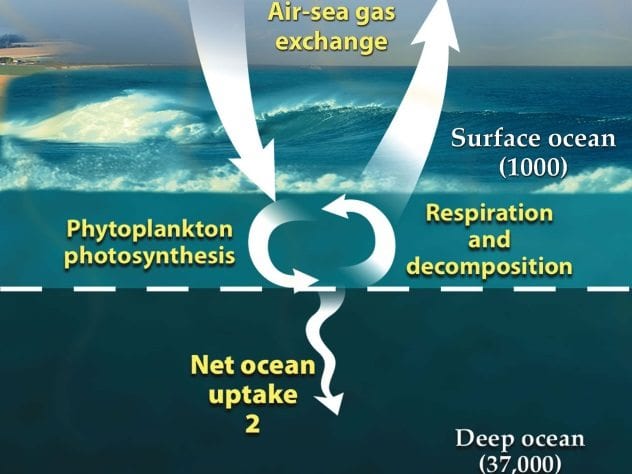
Carbon—one of the most abundant elements on Earth, making up all of us. Carbon has always cycled through marine and terrestrial environments, but it has started to become an issue during industrial times, as humans began dumping literally tons of excess carbon into the environment. So where does it all go?
Well, carbon dioxide, a known greenhouse gas which causes global warming, accumulates in the atmosphere, getting trapped and causing the overall heating of planet Earth. The ocean is our greatest carbon sink, meaning that it can essentially trap large quantities of carbon for very long periods of time. Carbon dioxide diffuses into the ocean, sinks all the way down to its deepest depths, and can stay there for years before eventually cycling back out.
Before deciding that this is the answer to all of our global warming problems, though, remember that everything in nature cycles. While the ocean absorbs about 37 gigatons of carbon each year, it also releases 88 gigatons. Also, our carbon emissions are significantly higher than the “worst-case scenario” carbon emissions predicted in the 1990s by environmental government entities.
9 Irukandji Jellyfish Are Worse Than Sharks
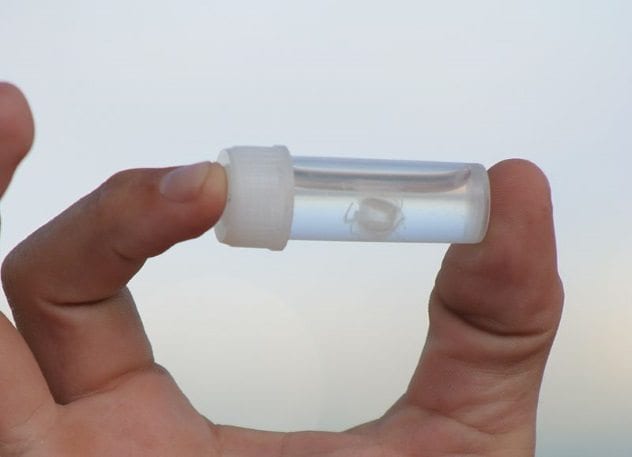
What sea creature scares you out of an afternoon dip in the ocean more than any other? Most people would probably say sharks. Well, we’re sorry to say that there are much scarier creatures residing in the ocean. Did anyone answer “jellyfish?”
Jellyfish are venomous, not poisonous. Their sting is brought on by contact, and they do not control it and therefore can continue to sting after death. Irukandji jellyfish are some of the smallest and deadliest species on the planet. They are about the size of a pinky fingernail and almost completely transparent. Anyone unlucky enough to brush up against one will, within five to ten minutes, experience symptoms including excruciating pain so strong that the effects of even morphine will wear off within minutes, vomiting, muscle cramps, and hemorrhaging in the brain or lungs. About 30 percent of victims end up with toxic heart failure or on life support due to complications.
Most documented cases of irukandji stings occur in Australia, where scientists have carefully studied them. For years, no one knew what was causing these horrible cases, and as a last-ditch effort, a net was put up at beaches of known occurrences to keep swimmers and beachgoers in a safe zone. Of course, the tiny irukandji could fit through the mesh, and the stings continued, eventually leading to the closing of the beaches. Scientists later discovered the true reason for the stings.
8 Why All The Cool Stuff Hangs Out On The Coast
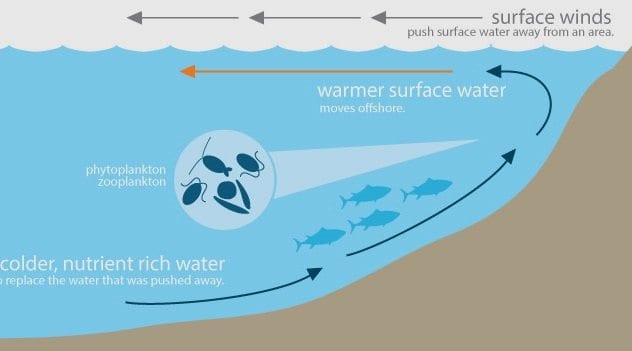
Have you ever wondered why all the fish and little invertebrates like to hang out on the coast, where people can constantly bother them, rather than enjoying solitude out in the open ocean? In a word: upwelling. Upwelling is a well-understood marine system in which cold, nutrient-rich waters are brought to the surface. Normally, nutrients at the surface are used up quickly by algae, plankton, and other microfauna, which must stay near the surface for the warmth and sunlight. This cycling, however, greatly benefits larger species, such as all the whales and sea lions we love to admire, and brings them to our coastal habitats.
Upwelling is caused by strong winds displacing surface water, allowing deep waters to cycle to the top. It occurs all over the world and characterizes the world’s most biologically productive regions, as it attracts a variety of species. One of the most productive regions in the world lies in California’s Monterey Bay, where spring upwelling provides perfect conditions for so many organisms. Long story short, if you’re a recreational fisher, you can’t do better than Monterey in spring.
7 The Tallest Mountain
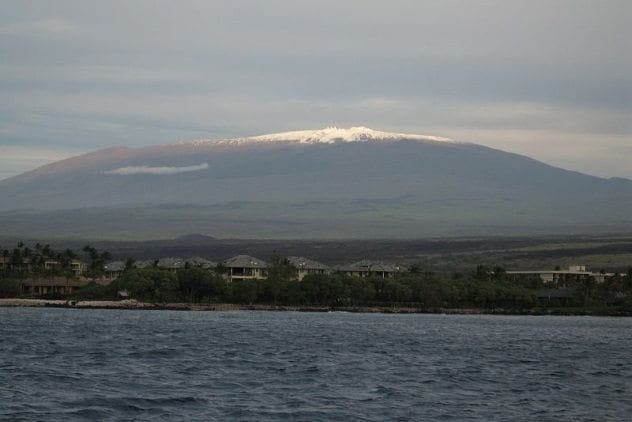
If you think Mount Everest is the tallest mountain on Earth, think again. The tallest mountain in the world is actually Mauna Kea in Hawaii. This monstrous mountain is over 1,200 meters (4,000 ft) taller than Everest, standing at around 9,750 meters (32,000 ft) tall from base to summit. Mauna Kea flies under the radar by hiding almost 6,000 meters (20,000 ft) of its height under the surface of the ocean. So if you’re looking for a mountain to visit, you may prefer hiking the trails around Mauna Kea over the treacherous and often life-ending journey to the summit of Everest.
Mauna Kea perfectly encompasses how vast the ocean is, having disguised one of the most gigantic and magnificent places on Earth. Everest may always be considered the tallest mountain on Earth because it is completely above sea level, but know that the ocean covers a majority of our planet. There are still so many secrets to be found, and there is no way to know what else may be hiding that we cannot see.
6 Ocean Acidification Is Even Worse Than It Sounds
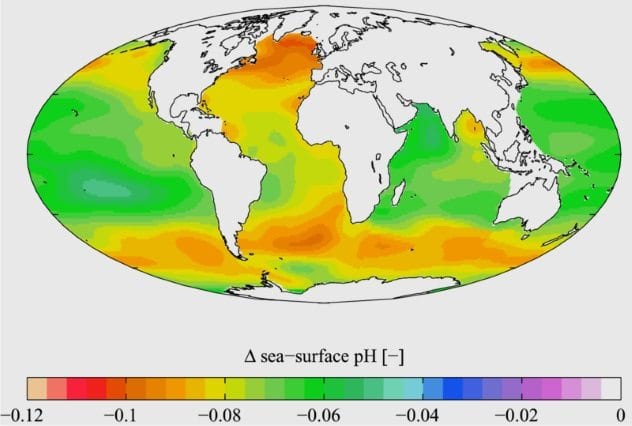
To understand ocean acidification, you must first understand the pH scale: the potential of hydrogen. The pH scale runs from 0 to 14, with 0 being completely acidic, 14 being completely basic, and pure water (with a pH of 7) being considered completely neutral. For reference, battery acid is a 0 on the pH scale, lemon juice is a 2, and bleach is very basic at 11. The ocean is generally slightly basic, at 8.1–8.2. To many, this begs the question, if the ocean is basic, why are we so worried about acidification?
Well, acidification, which is caused by carbon dioxide diffusing into the ocean, forms a weak acid called carbonic acid. An acidic liquid has more free-floating hydrogen atoms, which is bad for marine species because hydrogen loves to bond with other elements, particularly the building blocks of calcium carbonate (CaCO3). Calcium carbonate is the substance that makes up the shells of crustaceans and many other marine species. Over time, acidification will not only break down calcium carbonate shells, but it will also make it more difficult to form them in the first place.
All of that science jargon aside, this is a huge threat to our oceans because most marine species are extremely sensitive to pH changes. Since preindustrial times, the ocean’s pH has changed by 0.1, which may sound small but is actually a 30-percent change. So you may have heard the term “ocean acidification” before, but now you can describe it in obnoxious detail at your next outing.
5 Humpback Fins: The Underwater Wings
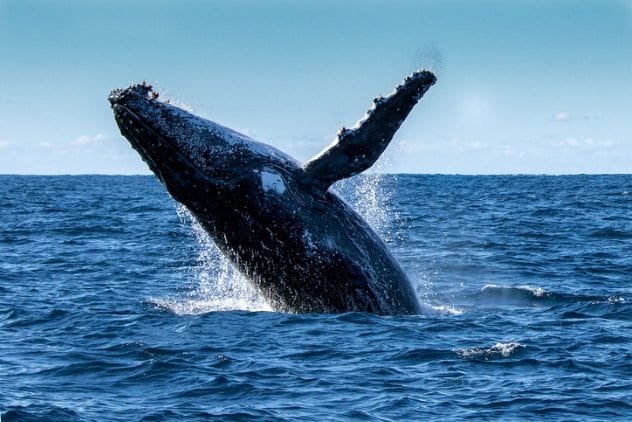
Whales are fascinating for so many reasons, and each species has their own incredible facts. The blue whale, for instance, is not only the biggest animal on the planet today but is actually the largest animal that has ever existed, including every dinosaur species that lived millions of years ago. Humpback whales, although smaller than blue whales, also have their claim to fame. The fin of a Humpback whale is perfectly evolved in such a way that engineers have taken note of their anatomy.
Humpbacks weigh in at an average of 40 tons but are still incredibly nimble, as they must be able to catch tiny shrimp and krill to feed. Their incredibly evolved fins are to thank for this. Everything about the fin of a humpback is designed to allow nearly effortless gliding through water. Their fins have ridges along the back end, which allows water to glide smoothly over the fin without causing turbulent vortices in its wake. The fin is also angled at precisely the right measurements so as not to slow down powerful movements. To understand how this works, just think of what happens when you lay your hand flat out of the car window on the freeway. When your hand is at the perfect angle, air glides around it smoothly, but the second you raise it too high, the wind pushes your hand upward. It works the same way for humpbacks in the water.
Everything about these creatures allows them to efficiently lunge, make sharp turns, and move quickly in the water column despite their daunting size. They have the perfect appendages to reduce drag, produce lift, and have flawless overall efficiency. Their fins have been studied time and time again to be applied to technology that humans are still developing today, from airplane wings to wind turbines to the tiny fans used to cool laptop computers.
4 Eye Worms
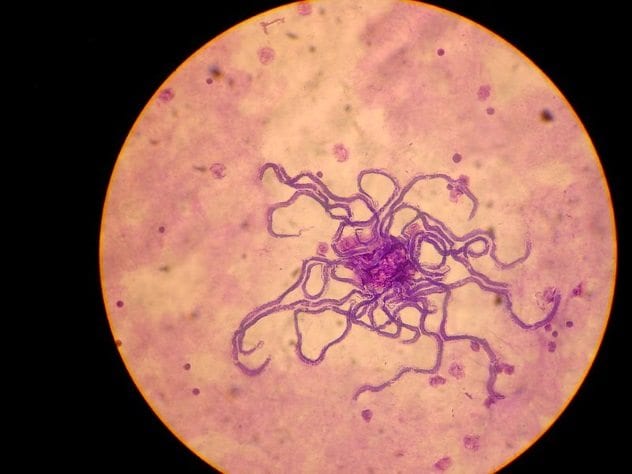
Consider this a warning: This entry is not for the faint of heart, and whatever you do, do not Google pictures of this one if you intend to eat all of your lunch. Marine parasites are wide-ranging and terrifying, especially since most of them are nearly impossible to see right in front of you, let alone swimming around in a pool of swirling water. One parasite in particular is especially unnerving. The scientific name is Loa loa, but it is more commonly referred to as the eye worm.
The eye worm has different life stages, one of which can include inhabiting a human host. They need water to survive, which is why in humans, they commonly gravitate toward our only external feature that always has plenty of fluid: the eyes.
As far as parasites go, it could actually be much worse. Eye worms may not cause immense pain or blindness or anything terrible just from being in an eyeball, but they make it easier for an infection to set in. Fear of these creatures mostly stems from the fact that it is common to be totally unaware you have one until you see it swimming by in your line of vision. They are microscopic and therefore very difficult to remove from the eye. Thanks to current medicine, we can kill them with some simple antibiotics, but when they first arrived in the US from Africa in the 1770s, anyone with an eye worm would not have been so lucky.
3 Dead Zones
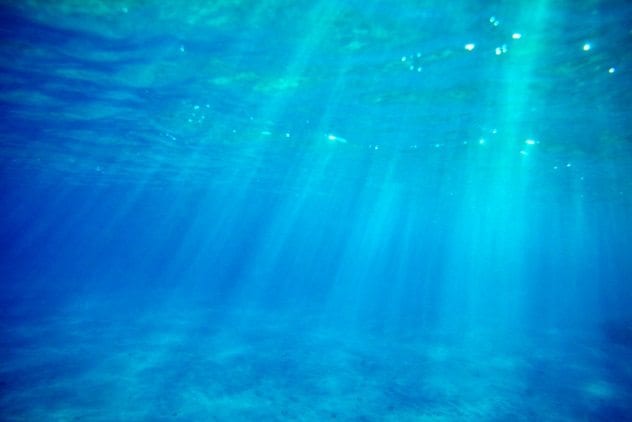
Dead zones are exactly what they sound like. Dead zones in the ocean are usually a result of a surplus of nutrients introduced by humans. These nutrients (commonly nitrogen or phosphorus) cause blooms of algae, which will eventually return to normal levels once they use up the excess nutrients. However, when the bloom dies out, it depletes the oxygen supply in the water, leaving behind an oxygen-deprived habitat, a phenomenon known as hypoxia. Hypoxia can be defined by oxygen levels as low as 2 parts per million. This means that for every one million particles, only two of them are oxygen.
Any mobile species, like fish, will simply leave the area, but the slower-moving species, like starfish, corals, or sea urchins, will usually die out, leaving a barren, deserted ocean region. This occurs commonly in farming areas, where fertilizers can easily seep into the ocean. The largest dead zone in the world is located in the Gulf of Mexico and is caused by farming activity.
2 Evisceration
Many people may know that sea stars and crustaceans like crabs and lobsters can detach a limb if they feel threatened or get caught and then regenerate it later. What if there was an animal that could do one better? Well, there is: the sea cucumber.
Sea cucumbers are basically oversized slugs living underwater, and most of them have the texture of a giant booger. What’s more, they can really only move by rolling around very slowly on the seafloor, making them an easy target for predators. However, they have evolved an uncanny ability to expel their internal organs out of their rectum. The only purpose this serves is to hopefully confuse the predator into thinking it is sick or dead and move along. The body parts can then be regrown over the following months.
“Evisceration” is only used in extreme cases, and sea cucumbers will first try to intimidate predators by taking in water and swelling up, but just the fact that anything can do this and still survive is pretty amazing.
1 Amazon Molly Fish
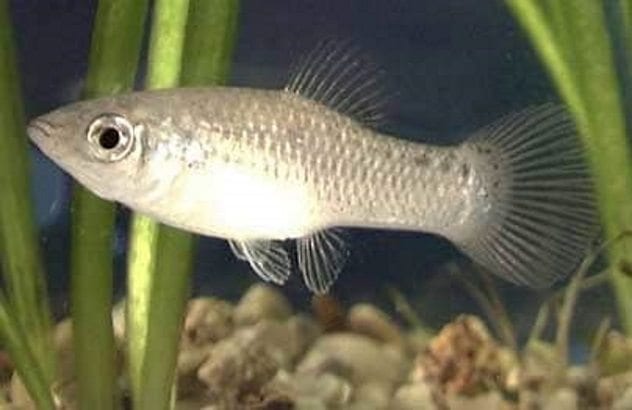
There really is no limit to what evolution will do to allow the survival of a species. Consider the Amazon molly. Named after the toughest Amazonian female warriors, these fish are all genetically female.
Amazon molly fish simply trick male fish into fertilizing their eggs. (How hard can it really be?) They don’t even need to be picky, as many different species of fish can spark reproduction; it really just comes down to what fish will fall for it. Rather than the sperm fertilizing an egg, the sperm will trigger the hormonal development of an egg which is an exact clone of mom.
There are a few different marine fish species which are made up of entirely females. Of course, there are drawbacks to producing clones rather than sexually reproducing. Amazon molly fish sometimes produce offspring with three sets of chromosomes, allowing them to be easily outcompeted by stronger fish. These extra chromosomes make the fish weak competitors, and they usually have a much shorter life span. That being said, these gals have been around a long time and are not in danger of extinction.
I am a surfer, diver, and marine biologist. The ocean is always teaching me something new and interesting. I also do some freelance writing, and I hope to teach weird ocean facts to as many people as I can!








